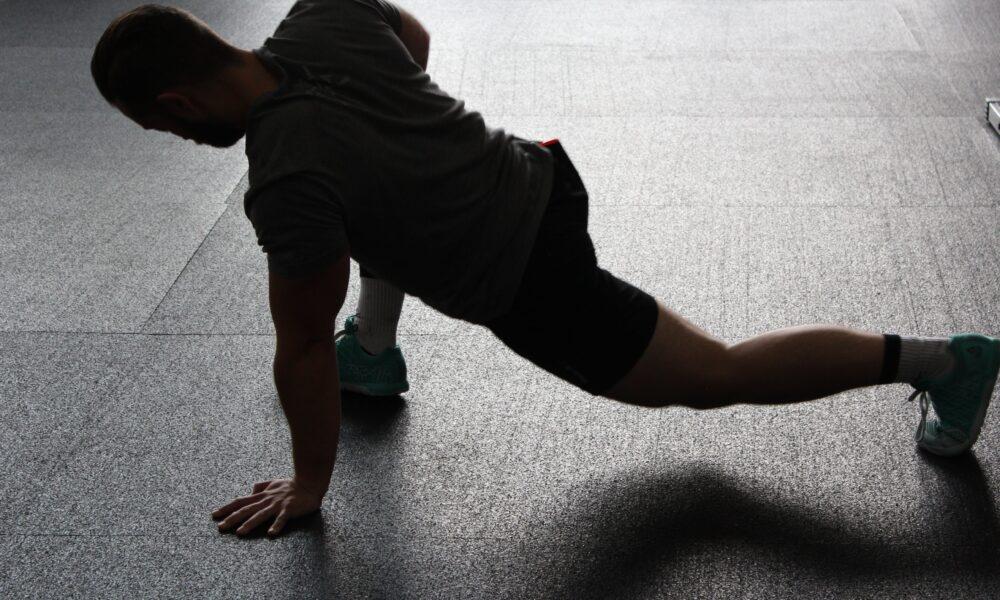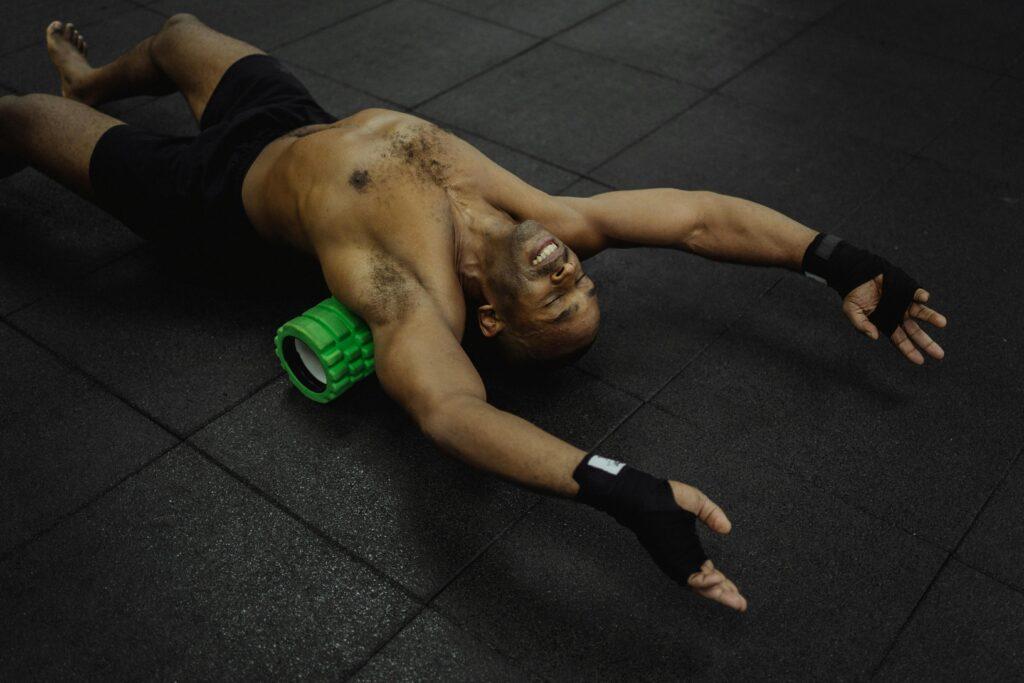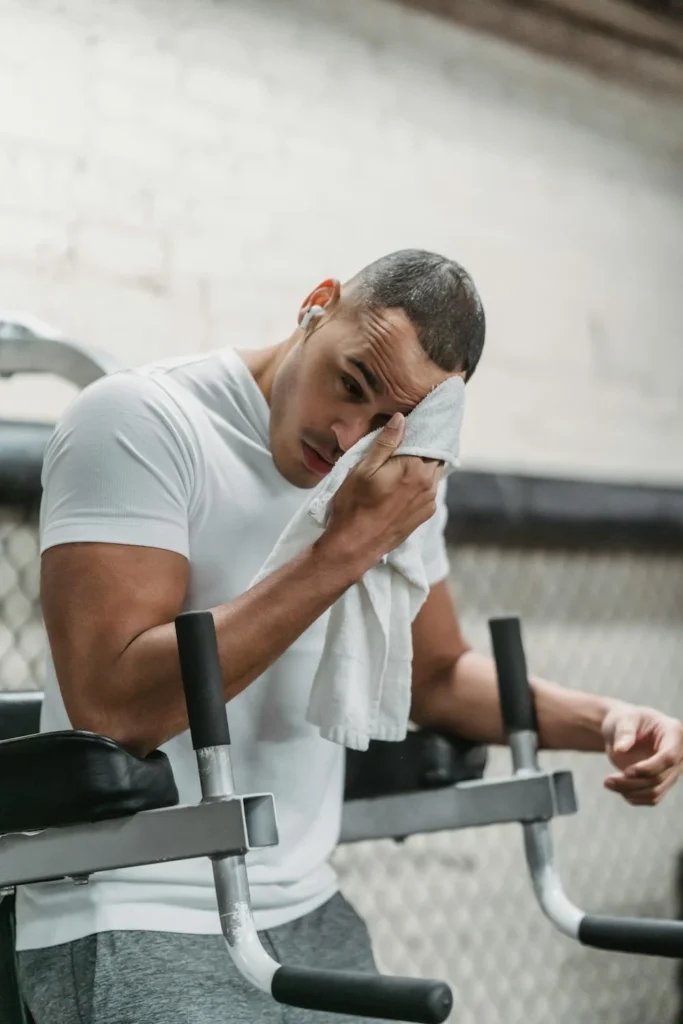

Muscle soreness is a common condition most bodybuilders experience after engaging in physical activity, particularly when they perform exercises that their body is not accustomed to or at an intensity level beyond their usual routine. It causes pain, discomfort, stiffness, and tenderness to the affected area, making it difficult to progress with their workout routine.
While it makes you uncomfortable, it’s also a telltale sign that you’ve worked hard enough to make your muscles grow and become stronger.
As long as it is just a muscle sore and not an injury, it should not impose a significant hurdle on your road to consistent fitness training. You can alleviate muscle soreness and progress towards peak fitness performance with various recovery strategies, such as hydration, massage therapy, active recovery workouts, and over-the-counter anti-inflammatory medications.
To learn how to relieve sore muscles fast, this article unveils 10 Ways to Relieve Muscle Soreness Fast. Read on
What Causes Muscle Soreness
Muscle soreness occurs due to damage caused to the muscle tissues. When you work out your muscles hard enough, you cause damage by a micro tear in the muscle tissue. Your body then responds to the damage by initiating the repair and healing process by triggering inflammation in the injured tissue. This inflammatory process involves various biochemical substances, including prostaglandins and cytokines, which contribute to the sensation of pain and soreness.
Aside from acute soreness, there is another type of soreness known as Delayed Onset Muscle Soreness (DOMS). It occurs after 12 to 24 hours of doing a new workout, a strenuous exercise, or eccentric training involving many eccentric workouts.
Unlike normal soreness, DOMS is actual damage to the tissue and occurs after hours, a day, or even two days after the exercise and can last one to three days. To prevent this kind of muscle soreness, experts recommend you cut out the time of your workout by one-third when trying new workouts. Also, avoid going extra hard on familiar exercises.
10 Ways to Relieve Muscle Soreness Fast
While muscle soreness is one of the unpleasant side effects of working out, it is a sign that your muscles are in the process of repairing and adapting to grow stronger and bigger. However, that doesn’t mean you should be sore after exercising or whenever you work out.
Below are ten strategies to relieve muscle soreness fast and help recover after a workout.
1) Practice Active Recovery Workouts
Active recovery involves engaging in low-intensity physical activity during the recovery period to help your muscles recover from more intense workouts. It promotes blood circulation to the muscles, which removes metabolic toxins that might lead to a sore muscle. Sufficient blood flow also delivers oxygen and fresh nutrients to the affected area to aid in the repair and healing process of muscle soreness.
Additionally, gentle movement during active recovery helps reduce muscle stiffness and soreness by promoting flexibility and joint mobility.
Active recovery workouts should be lower to moderate intensity with a heart rate of 30% to 60% of your maximum. This could include doing exercises like yoga, swimming, foam rolling, walking, jogging and cycling at a slower pace. You can even do your regular weight lifting workout as a recovery workout if you dial down the intensity by reducing weight, repetition, or both.
2) Hydrate Before, During and After Your Workout
Muscle soreness could worsen when you don’t hydrate your body well when working out. Research suggests that dehydration may worsen DOMS symptoms and prolong recovery, which may hinder your fitness goals.
To prevent or relieve DOMS symptoms, hydrate your body by drinking water or electrolyte drinks before, during, and after exercise.
Water helps flush out toxins produced during exercise and keeps fluids moving in your body system, reducing the risk of muscle soreness and fatigue and easing inflammation.
Sweating during exercise leads to the loss of electrolytes, such as sodium, potassium, calcium, and magnesium, that play a vital role in muscle function. Drinking electrolyte drinks helps restore electrolyte balance, preventing muscle soreness and cramps.
To ensure adequate hydration, drink about 13 to 20 ounces of water before working out and 5 to 10 ounces every 15 to 20 minutes of workout. Consume electrolyte-rich fluids or foods if you engage in prolonged or intense workouts for over 90 minutes.
Also, monitor urine color as it indicates your hydration level; light yellow or pale yellow indicates adequate hydration, whereas medium or dark yellow indicates dehydration. Vitamin supplement intake may cause the urine to be darker than average.
3) Do Foam Rolling After the Workout
Foam rolling is a form of self-myofascial release (SMR) or self-massage. This technique involves using a foam roller (cylindrical tube) to apply pressure to specific points on your body to release tension in the fascia, a connective tissue surrounding muscles, bones, and joints.
Foam rolling promotes muscle recovery by increasing blood flow to the targeted area. Improved circulation helps deliver oxygen and nutrients to the affected muscles, reducing swelling and tenderness and assisting in muscle recovery.
Foam rolling may help alleviate delayed onset muscle soreness (DOMS) by breaking up adhesions and knots in the muscles, reducing overall muscle tension. It also improves the joint range of motion by targeting areas around the joints, which leads to improved joint flexibility and reduced stiffness.
If you’re unaccustomed to foam rolling, start with a softer, low-density roller and gradually progress to firmer ones as your muscles adapt.
Regular foam rolling can be more effective than occasional sessions, so consider incorporating it into your warm-up or cool-down routine. However, focus on rolling over muscle tissue and not applying direct pressure on joints or bones.

4) Opt for Ice Therapy
Ice therapy, known as cold therapy, is a common and effective approach for relieving muscle soreness, reducing inflammation, and managing acute injuries. It relieves muscle sores by reducing blood flow to the affected area, which might reduce pain and swelling.
Ice therapy helps control the inflammatory response. By limiting blood flow and reducing swelling, ice helps prevent the accumulation of excess fluids and inflammatory substances in the injured or sore tissue.
Apply ice to the affected tissue for about 20-30 minutes to reduce blood circulation to the area and relieve pain. Repeat every 2-3 hours, especially during the initial 24 to 48 hours after the onset of soreness or injury. It is suitable for fresh muscle soreness or injury because it helps minimize swelling and inflammation.
5) Try Heat Therapy
Heat therapy is almost similar to cold therapy, but it increases blood flow to the affected muscles instead of reducing blood flow. This enhanced circulation delivers oxygen, nutrients, and immune cells to the muscles, promoting relaxation and reducing stiffness.
If you still experience muscle soreness after 48 hours, apply heat for about 20-30 minutes to stimulate blood flow to the muscles to ease stiffness. Prolonged exposure to heat can lead to dehydration or skin irritation.
Also, avoid using extreme temperatures to prevent burns. Test the temperature of heating pads or packs before applying them.
6) Consider Massage Therapy
If self-massage like foam rolling isn’t for you, consider turning to a professional for a massage. A post-workout massage reduces inflammation by promoting the drainage of excess fluids and decreasing the production of pro-inflammatory cytokines. A study found that massage therapy reduced inflammation and promoted muscle tissue recovery following exercise-induced muscle damage.
7) Get Over the Counter Pain Relief Medicine
Over-the-counter anti-inflammatory medication can help relieve pain and muscle soreness. Non-prescription pain relievers like ibuprofen, aspirin, or naproxen can help reduce pain and inflammation.
However, use them according to recommended guidelines and consult a healthcare professional. Taking more doses of these medicines may prevent muscles from growing bigger and stronger.
8) Get Proper Nutrition
A balanced diet is one of the strategies to promote muscle recovery and relieve soreness. Consume a post-workout meal rich in protein, vitamins, minerals, carbs, and anti-inflammatory foods.
Anti-inflammatory foods contain compounds that reduce levels of inflammatory markers in the body that may cause muscle swelling. Together with other foods, they can eliminate DOMS by contributing to overall inflammation management, promoting recovery, and potentially alleviating discomfort.
Proteins are also essential. Consuming adequate protein in the post-exercise period provides the amino acids necessary for muscle protein synthesis, which helps repair micro tears and promotes overall recovery.
Carbohydrates are the body’s primary energy source during exercise, and a strenuous exercise usually depletes glycogen stores in muscles (glycogen is a form of stored glucose from carbohydrates), contributing to muscle fatigue and soreness.
Consuming carbohydrates post-exercise helps replenish glycogen levels, providing energy for subsequent workouts and supporting muscle recovery.
9) Wear Compression Garments
Wearing compression gear like sleeves, socks, or full-body suits during and after working out may increase blood circulation by applying graduated pressure to specific body areas. This may help minimize swelling and edema (fluid retention) in the limbs after intense exercise, resulting in speedy muscle recovery.
Additionally, compression garments may help reduce muscle oscillation, repetitive stretching, and contracting of muscles during physical activity. This reduction in muscle oscillation can contribute to decreased muscle damage and soreness.
10) Get Enough Sleep
Getting enough sleep is an often overlooked recovery strategy that significantly relieves muscle soreness and promotes overall physical well-being.
Sleep influences the release of growth hormone and testosterone, critical for muscle repair and growth. These hormones help stimulate the synthesis of new proteins, contributing to the recovery of damaged muscle tissue.
Adequate sleep has been associated with improved blood circulation. During sleep, the body redistributes blood flow to the muscles, providing essential nutrients and oxygen. Improved blood flow supports removing metabolic waste products from the muscles, contributing to the reduction of soreness.
Conclusion
Experiencing muscle soreness is a natural part of the fitness process, and it indicates that your muscles are growing and recovering by adapting to the new pressure placed on them. But when the soreness prolongs, it makes you uncomfortable and hinders your workout routine, derailing your fitness goal.
Effective recovery strategies are vital in alleviating muscle soreness and promoting long-term growth and performance. Rest, hydration, and proper nutrition are fundamental for recovery.
In addition to these basics, consider incorporating active recovery techniques such as active recovery exercises, foam rolling stretching, and massage into your routine. Explore these strategies to find what works best for your body.





















You must be logged in to post a comment Login